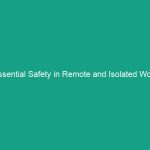Introduction
Good morning team! Today, we are going to discuss a crucial topic that affects all of us during this time of year: Essential Winter Weather Driving Guidelines to Stay Safe This Season. As the winter months approach, the roads can become treacherous due to snow, ice, and reduced visibility. Understanding how to navigate these conditions not only keeps you safe but also protects your colleagues and the community at large.
Winter driving is not just about getting from point A to point B; it’s about doing so safely. By following the guidelines we’re discussing today, you can help prevent accidents and ensure a safer travel experience for everyone.
Understanding Essential Winter Weather Driving Guidelines
When we talk about Essential Winter Weather Driving Guidelines to Stay Safe This Season, we’re referring to the practices that every driver should adopt to navigate winter conditions effectively. These guidelines are designed to minimize risks associated with winter weather, such as slipping, skidding, and reduced visibility.
Many employees might think they can drive as they normally would, but winter weather changes the rules. Ice formation, snow accumulation, and colder temperatures all contribute to challenging driving conditions. Recognizing this is the first step towards safe winter driving.
Key Hazards, Risks, and Safety Considerations
Winter weather introduces several key Hazards that all drivers need to be aware of:
- Ice: Black ice can be particularly deceptive as it blends with the road surface, making it hard to see. This can lead to sudden loss of control.
- Snow Accumulation: Heavy snowfall can obscure road markings and signage, leading to confusion and potential accidents.
- Reduced Visibility: Snowfall and fog can significantly reduce visibility, making it difficult to see other vehicles, pedestrians, or road hazards.
- Cold Temperatures: Cold weather can affect vehicle performance, including tire pressure and battery efficiency.
Ignoring these hazards can result in serious consequences such as accidents, injuries, or even fatalities. It is vital to understand these risks and take them seriously.
Best Practices, Procedures, & Actionable Advice
To ensure safe driving during winter weather, here are some practical steps you can take:
1. Prepare Your Vehicle
- Ensure your tires are winter-ready. Check for adequate tread depth and consider using winter tires for improved traction.
- Keep your windshield wipers in good condition and use winter-grade windshield washer fluid.
- Make sure your battery is fully charged and that your vehicle’s antifreeze levels are appropriate for winter conditions.
2. Adjust Your Driving Habits
- Slow down. Reducing your speed gives you more time to react to dangerous conditions.
- Increase following distance. Maintain a larger buffer between your vehicle and the one in front of you.
- Avoid sudden movements. Gentle steering, acceleration, and braking can help maintain control of your vehicle.
3. Know How to Handle Skids
If you find yourself skidding, remember to:
- Steer in the direction you want to go.
- Avoid slamming on the brakes, as this can worsen the skid.
- Look where you want to go, not at the obstacle.
4. Stay Informed
Before heading out, check the weather forecasts and road conditions. This will help you make informed decisions about your travel plans.
5. Emergency Preparedness
Always be prepared for emergencies by carrying a winter survival kit in your vehicle, which should include:
- Blankets or sleeping bags
- Non-perishable food and water
- A flashlight with extra batteries
- First aid supplies
- Shovel and ice scraper
Regulations, Standards, and Compliance
It’s essential to be aware of the Regulations that govern winter driving. The Occupational Safety and Health Administration (OSHA) emphasizes the importance of Safe Driving Practices, especially in hazardous weather conditions. Adhering to these regulations not only keeps you safe but also ensures compliance with Workplace Safety standards.
Remember, compliance is not just about avoiding penalties; it’s about protecting yourself and your colleagues from potential harm.
Employee Engagement & Discussion
Now that we’ve covered the essential guidelines, let’s open the floor for discussion. I encourage you all to think about your own experiences with winter driving:
- What Safety challenges have you encountered related to winter driving?
- Have you ever had to deal with a roadside emergency in winter conditions? How did you handle it?
- What additional tips can you share with your coworkers to help them stay safe this season?
Your insights can help create a safer work Environment for everyone.
Conclusion & Key Takeaways
As we wrap up today’s Toolbox Talk on Essential Winter Weather Driving Guidelines to Stay Safe This Season, remember the key points we’ve discussed:
- Prepare your vehicle for winter conditions.
- Adjust your driving habits to account for hazards.
- Be aware of emergency preparedness.
- Stay informed about weather and road conditions.
Prioritizing these practices can make a significant difference in your safety and the safety of those around you. Thank you all for your attention and your commitment to safety. Let’s make this winter season a safe one!


